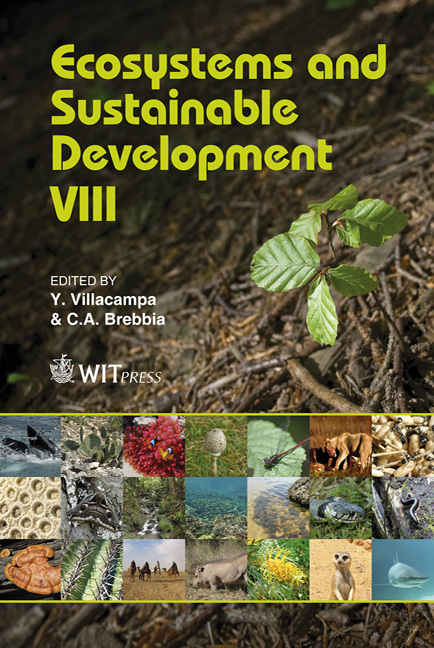The Deterioration Of Basin And Sediment Overlapping In The Infrastructure Of The Irrigation Districts In Mexico
Price
Free (open access)
Transaction
Volume
144
Pages
7
Page Range
103 - 109
Published
2011
Size
2,719 kb
Paper DOI
10.2495/ECO110091
Copyright
WIT Press
Author(s)
R. Lomeli & N. Alvarez
Abstract
The surface dedicated to agriculture in Mexico is of approximately 21 million hectares, of which 6.4 million count as irrigation infrastructure, and 3.5 million (54%) correspond to 86 great areas called Irrigation Districts. The irrigated farming generates more than half of the national agricultural production. One of the main problems of the infrastructure maintenance is the accumulation of sediments in the distribution and drainage networks, caused fundamentally by insufficient actions of soils and water conservation in the basins of the irrigation dams. The present work analyzes the impact of the catchment basins degradation in the accumulation of sediments in the Irrigation Districts. Keywords: sediment removal, irrigation districts maintenance, catchment basins, soil and water conservation works. 1 Introduction In Mexico, the area dedicated to agricultural activity varies between 21 and 24 million hectares annually. The surface with infrastructure for irrigation is 6.4 million hectares, México ranks sixth place in the world, in terms of irrigation areas made of 86 Irrigation Districts with 3.5 million hectares and 39482 irrigation units of small irrigation with 2.9 million hectares [1–3]. In addition there are called Temporal Tecnificado districts that directly depend on the rainfall, with no irrigation infrastructure, but using different techniques and works to reduce the damage caused by the occurrence of heavy and prolonged rains or drought-, to improve the rain and moisture gathering in farming lands.
Keywords
sediment removal, irrigation districts maintenance, catchment basins, soil and water conservation works





